The introduction of XGS-PON (10 Gigabit Symmetric Passive Optical Network) can be viewed as a step further into the future concerning the development of optical transceivers in response to the rising expectations for internet providers. The rise in data traffic is driven by the availability of cloud applications, video consumption, or IoT devices, which necessitates the development of high-performance networks. Apart from those, the XGS-PON SFP+ transceiver also adds efficiency and expansion capabilities to the networks. This article describes the XGS-PON SFP+ transceivers, including their physical parameters, benefits, and implementation in one piece, covering the areas of interest in networking today. As the articles cover such progressive optical transceivers, the reader’s knowledge of the evolving communication technology and how it will enhance future technologies is expanded.
What is an XGS-PON Transceiver?
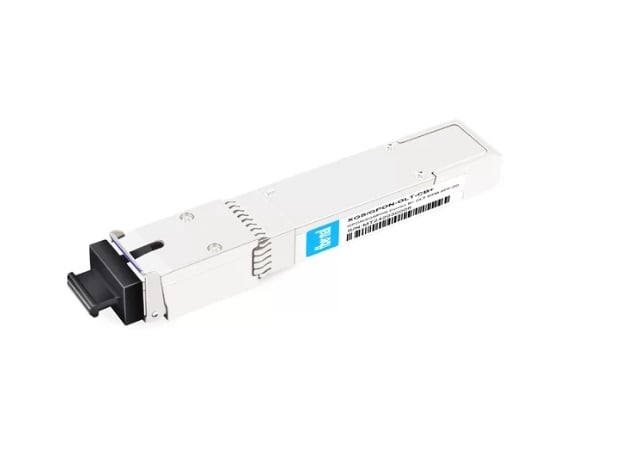
Understanding the XGS-PON Technology
The XGS-PON (10 Gigabit Symmetric Passive Optical Network) emerges as an advanced and sophisticated passive optical network (PON) type, allowing symmetrical data communication at rates up to ten Gpbs in either direction. This is done using wavelength division multiplexing (WDM), suitable for network traffic management, where optical signals are routed to different wavelengths. Unlike previous systems, which were built around the asymmetrical feature of PON systems in terms of bandwidth provision, the symmetrical feature is now crucial in XGS-PON systems, whereby the uploading and downloading speeds are the same. This provision is highly demanded by modern applications such as video conferencing and cloud computing, which rely heavily on bidirectional high-speed data transfers. Furthermore, XGS-PON can be implemented in parallel with the existing GPON infrastructure to ensure that the service providers can upgrade their systems without affecting a major change in the system architecture, especially using optical transceiver modules for ten gigabit-capable passive technologies.
Key Features of XGS-PON Transceivers
The elements found in XGS-PON transceivers enhance their capabilities and effectiveness in any networking environment. First, they have a maximum data rate of up to 10Gbps, which allows for data transfer for bandwidth-hungry applications. Second, these transceivers achieve duplex transmission, meaning that uploads and downloads occur concurrently, which is essential for live applications like video conferencing and online gaming.
As if this is not enough, XGS-PON transceivers also employ various error correction algorithms that come in handy during data transmission. Another common characteristic is a small form factor, such as Pluggable Plus SFP Plus, which is a form factor that minimizes form factors in network equipment without compromising the compatibility of insertion and extraction. Further, compliance with the GPON condition has helped enhance expansion without making new construction works. Finally, remote monitoring and management functionality is achievable, allowing efficient network management with minimal disruption of service and increased throughput.
How Does XGS-PON Differ from GPON?
XGS-PON-based- and GPON-based networks are similar but have different data transport capacities and topologies. XGS-PON supports symmetrical bandwidth up to 10 Gbps upstream and downstream, which meets the requirements of these new high-bandwidth applications and services. In contrast, GPON supports technologies with asymmetric 2.5 Gbps downlink and 1.25 Gbps uplink bandwidth. In this approach, multiple XGS-PON channels can be sent over the same optical fiber using modern wavelength division multiplexing, resulting in better optimization of resource use and improved network efficacy. In contrast, GPON is based on a single wavelength, which may adversely affect the bandwidth as user demand increases. Therefore, XGS-PON is better suited for current applications that require solid and balanced data transfer characteristics.
How Does an Optical Transceiver Work?
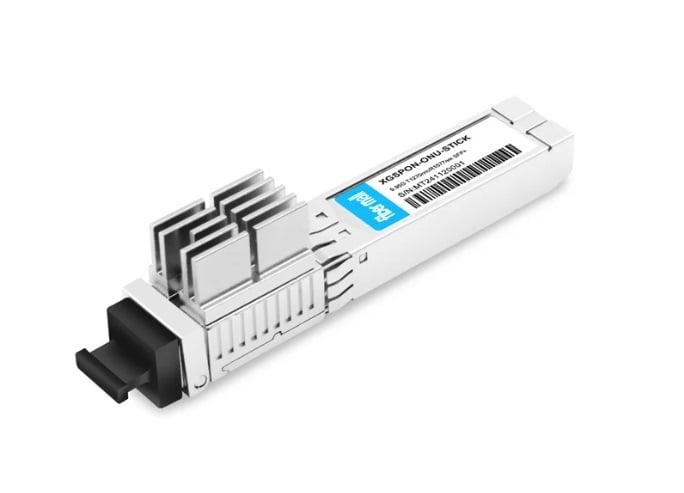
The Basics of Optical Transceiver Modules
Optical transceiver modules are fundamental elements of contemporary communication systems, allowing the bridging of the optical and electrical interfaces. Usually, one can find a transmitter, which converts the electrical information into optical information, and a receiver that does the reverse. A transmitter typically employs a laser or light-emitting diode (LED) to form an optical signal. At the same time, most receivers contain a photodiode that senses light and changes it back to an electrical signal. These modules work in various wavelengths and formats to support industry standards for networking SFP, SFP+, and QSFP. They are thus designed to be helpful in optical transmissions, whether for short-range or long-range purposes. The use of high-speed optical transceivers suitable for many computing applications has made it essential in telecommunications systems, data centers, and enterprise networks. To address the requirements of complementary technologies and the demands of newer systems, the future design and development of the optical transceiver would aim at improving the data rates and enhancing the integration levels.
Components of an Optical Transceiver
Any optical transceiving will not work if the parts of the optical transceiver are not included. One such part is the:
- Transmitter: This part transforms the electrical signal into an optical signal. It often uses laser diodes or LEDs to produce light with desired wavelengths compatible for transmission through fiber optic cables.
- Receiver: The receiver receives optical signals and restores them to electrical current. Photodiodes, which are receptive to incoming light and convert it into electrical current, are typically utilized for this purpose.
- Optical/Electrical Interface: This interface connects the transceiver’s optical elements to the electronic circuitry. It also contains conditioning circuits that control the signal’s level and allow interfacing with various networking standards.
- Housing: The outer housing of the transceiver keeps the internal circuitry safely housed away from the hazardous environment and allows the dispersion of heat. Depending on the application, such enclosures are mainly specific to certain form factors (e.g., SFP, SFP+, QSFP).
- Control Circuitry: This consists of the ICs responsible for the transceiver’s operation, including all functions such as monitoring temperature, voltage, and transmit power.
They achieve this in different instances while ensuring efficient and reliable data transmission within the specific network systems.
The Role of SFP in Optical Networks
Small Form-factor Pluggable (SFP) modules are frequently employed in optical networks to provide appropriate connectivity solutions. SFP transceivers support communication protocols to make a high-speed data link between network elements such as routers and switches. They offer hot swap capability, which enables network managers to add or replace components in the system without turning off the whole network, and this minimizes downtime for the network. In addition, the SFP-ads mechanism supported long cable runs without compromising signal quality by supporting several wavelengths and optical standards suitable for both data center interconnections and Wide Area Networks (WANs). The increasing demand for communication services, changing technologies, and evolving application requirements for optical networks do not seem to hinder the growth of SFP modules but instead further improve the integration and the incorporation of other media types.
What Are the Applications of XGS-PON OLT and ONU?
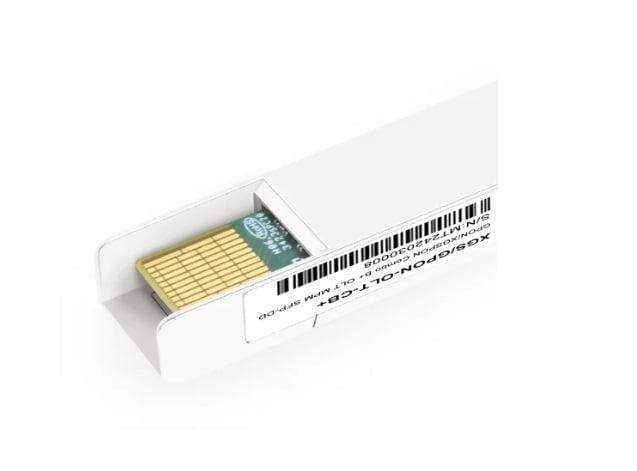
Significance of XGS-PON OLT in Optical Networks
XGS-PON Optical Line Terminals (OLT) provide high-speed broadband access in optical networks. Eth XGS-PON technology, on the other hand, has two-way features supporting high data rates of up to 10 Gbps, targeting high bandwidth usage applications such as 4K streaming and telework demands. XGS-PON has proved to be an improvement by introducing better bandwidth management and increasing the network’s capacity, thus enabling service providers to sustain more consumers.
These units are also XGS-PON OLT compatible and can be used on previously installed fiber technologies. This adaptability not only simplifies operators’ transitions but also reduces investment costs. Possessing sufficient Wavelength Division Multiplexing capabilities, XGS-PON OLTs enhance frequency and spectrum performance to enhance the network’s efficiency and dependability. Therefore, they are becoming crucial components within the telecommunications networks supporting such developments as smart cities, IoT, and next-generation broadband services.
How XGS-PON ONU Enhances Connectivity
XGS-PON Optical Network Units (ONUs) are key elements in the provision of data broadband services over fibre optic networks. This includes demodulating optical signals to usable information for the users of the services created by the OLT. Offering a symmetrical bandwidth of up to 10Gbps, all XGS-PON ONUs can cater to many bandwidth-demanding applications, thus making them good for home, corporate, and institutional use.
In addition, XGS-PON ONUs have superior characteristics, such as enhanced Quality of Service (QoS), which helps manage traffic in the network and minimize latency and jitter for critical non-voice services like video conferencing and online gaming. Being scalable, operators can roll out services quickly and economically to support more devices and users in a connected world. Integration with other technologies and existing systems also aids in providing next-generation services, thus improving service quality and network connectivity.
Comparing XGS-PON ONU Stick with Other ONUs
Two factors that stand out in the XGS-PON ONU Stick compared to other optical network units are its impressiveness, performance, physical specifications, and compatibility. One special physical feature of the XGS-PON ONU Stick is its minimalistic physical size, which allows for easy installation, especially in enclosed spaces. While conventional ONUs may entail long installation processes that require physical assets, the stick form enables ‘plugging’ into the devices with ease, minimizing installation efforts.
Regarding capability, the rapidity of internal data processing is about 10 Gbps, going along with the other modern ONUs, but this does not restrict users. This performance guarantees high-mast bandwidth activities such as 4K video streaming and participation in advanced online games.
Furthermore, it should be noted that compatibility is also essential; typically, the XGS-PON ONU Stick is designed to work with PONs that are already in place. Hence the need for the operator to modify the existing systems to accommodate it is eliminated. This is of particular benefit to operators who wish to enhance their capabilities and install new systems within their existing structures, especially when using optical transceiver modules for 10Gbps transceivers passive technologies. From a study of these considerations, it is evident that the XGS-PON ONU Stick has unique operational convenience, effectiveness, and compatibility strengths, hence making it suitable for up-to-date telecom requirements.
How to Choose the Right SFP Modules for Your Network?
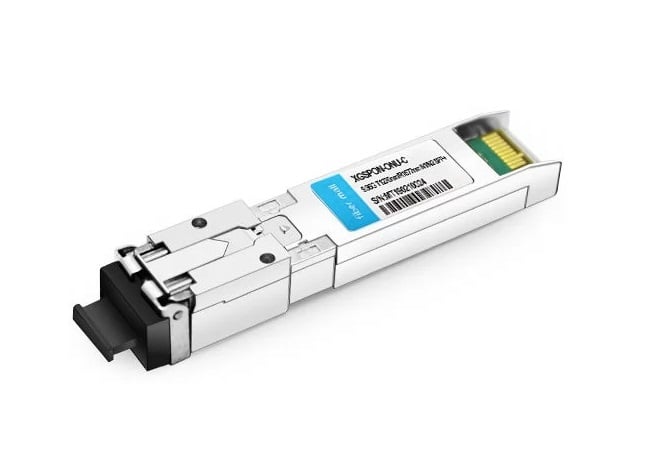
Factors to Consider When Selecting SFP Modules
When choosing SFP modules for the connection of any network, it is necessary to consider several critical factors to achieve performance and compatibility with the required objectives:
- Data Rate: SFP modules, which support data rates ranging from 1gbps to 100gbps, come in several types. When buying an SFP module, achieve the structured cabling requirements, as the data rate must be in line with the data transfer provisions in the specific network to avoid data traffic hindrances.
- Wavelength: The actual operating wavelengths of SFP modules are very important for the distance and quality of transmission that one is able to achieve. A typical short-range wavelength would be 850nm, while it is 1310nm or 1550nm for long-range contacts. The proper wavelength has to be selected depending on the target range and performance of your network, especially when employing an OTN function module.
- Distance: SFP module specifications available show the maximum distance to cover by the SFP module should be considered. Short-distance modules (not more than 300 meters), medium-distance modules (up to 10 kilometers), and long-distance modules (over 100 kilometers) are all available. A module concerning your distance should be chosen to maintain communication.
- Connector Type: Several connector types with their SFP modules are utilized, such as the LC, SC, or MTP/MPO. For ease of installation and interconnections, ensure that the connector type used is the same as the existing cabling system.
- Range of operating temperature: The most critical factor when evaluating the SFP module is the operating temperature range as per the deployment environment. For example, industrial-grade modules are designed for conditions much more severe than those afforded by the more socially compliant commercial-grade modules. This can be important for many applications.
- Compatibility and Vendor Lock-in: It is also necessary to check that the SFP modules that have been decided upon will work with the existing network hardware. If there are issues with the SFP compatibility, underperformance can occur, or the module usually refuses to work in other instances. In addition, the option of buying the same vendor modules as your network hardware comes into play to avoid vendor lock-in problems and difficulties with support.
- Cost and Scalability: Lastly, consider the SFP module prices against your budget and future scalability needs. Although low-cost modules may look attractive, you may soon end up investing in other associated costs that are cheaper. Cheaper modules last longer, have low failure rates, and hence reduce the cost of ownership.
By analyzing these components in-depth, network administrators make better choices, which leads to network optimization and decreased chances of downtime or compatibility issues in the future.
Top Vendors for SFP Modules and Optical Transceivers
Certain companies have a reputation for the reliability and performance of their products, which should also be considered when choosing vendors for SFP modules and optical transceivers. The following vendors are often mentioned among the top companies functioning in the market:
- Cisco Systems: Once synonymous with computer networking, Cisco provides extensive SFP modules and optical transceivers for specific networking products. The Cisco products are known for their solid performance and come with considerable support materials.
- Finisar: An optical communication component manufacturer, Finisar is particularly famous for its SFP modules and transceivers. Their products, which come in multiple varieties tailored to various performance requirements, can be found in numerous data centers and telecoms orbiting metropolitan areas.
- Mellanox Technologies (now part of NVIDIA): Mellanox offers a very broad range of SFP modules and optical transceivers through its various distributors. These products are mainly designed for use in networks with high throughput. They focus on increasing the speed of data transfer and eliminating delays.
These vendors have proven themselves through product efficiency, quality control, and customer service, which is why they can be trusted by network administrators searching for SFP modules and optical transceivers.
Ensuring Compatibility with GPON Combo and Other Technologies
Compatibility with the GPON (Gigabit Passive Optical Network) combo devices and other technologies requires some specifications. First, ensure that the SFP modules and the optical transceivers comply with the ITU-T G.984 specifications, which define the performance requirements for GPON systems. Also, the optical interfaces must be the same type regarding wavelength and connector since these will be interfacing, especially considering the vendor name.
In addition, it is also useful to check the compatibility matrices provided by the manufacturer of GPON equipment and the supplier of the SFP module since this will show what combinations have been tested and are acceptable. Lastly, remember that some of the different applied technologies may entail new firmware updated versions to boost their functionality and applicability, hence becoming a part of the new networking plan.
Why Are Optical Transceivers Crucial for Fiber Optic Networks?
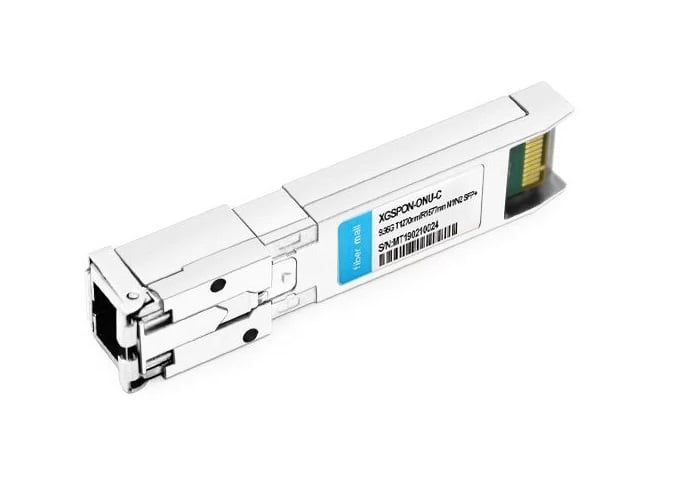
Understanding the Role of Optical Transceivers in Fiber Optic Communication
Optical transceivers are considered essential parts of fiber optic communication systems since they primarily change the electrical signals to optical and vice versa. This process is crucial in enabling communication through copper and fiber optic cables, which possess the characteristics of higher bandwidth with lower attenuation in long-distance communication. In networking, there are different kinds of transceivers, including SFP, SFP+, and QSFP+, designed to meet the various networking requirements and simultaneously support multiple data rates of between 1 Gbps and 400 Gbps.
The scope of operation of optical transceivers is not just limited to signal conversion. They are still essential in controlling and regulating the protocols necessary for GPON and CWDM (Coarse Wavelength Division Multiplexing) technologies. Modern optical transceivers build upon the network’s existing reliability and transmission quality by utilizing error correction and signal regeneration approaches. Also, because they work with the existing infrastructure, they allow network administrators to add to or upgrade their systems without requiring a complete overhaul, which is essential in the flexibility and versatility of optical networks.
Advancements in Fiber Optic Technology
The successes truly archived in the past in optical fibers have dramatically improved the efficiency of communication processes. One significant enhancement is the improved data transmission capabilities. As a result, connections handling data rates of over 800Gbps became a reality courtesy of DWDM—a technique allowing all the channels in an optical fiber to be in action concurrently. The process uses fiber’s already large capacity, resulting in additional capacity extension at no extra cost for adding structural elements.
Loss of light when propagating within a fiber is another significant hurdle addressed with hollow-core fiber technology, which involves light conduction in air instead of silica. This modification results in longer-range communications with reduced Latency. Moreover, AI systems have also been included when handling fiber optic networks, assisting in surveillance and control tasks, including operating real-time analytics and improving preventive care for the networks in question, improving system performance and reliability.
In addition to these developments, improved engineering precision and newer cost-effective installation technologies ensure that optical fiber technology continues to advance and more effectively meets communication demands in an era that is becoming more information-oriented.
The Future of Optical Networks with Advanced Transceivers
As new transceivers are developed, the advancement of optical networks is likely to be subject to decisive factors such as enhancement of data transfer, efficiency, and adaptability imposed upon the design of the network. There have also been recent data that suggest the use of pluggable optical transceiver systems such as the Small Form-Factor Pluggable (SFP) that are more suitable for scalability and upgrades. These devices can achieve higher data rates; for instance, data rates of 400 G and more are becoming prevalent within data centers for cloud computing and large-scale data processing.
Innovations like silicon photonics are also becoming common, combining optical components and semiconductor technologies, resulting in lower costs and improved functionality. Increased integration has made it possible to design high-density transceiver systems that can move large volumes of data while reducing energy requirements. With the development of new networks that integrate concepts such as 5G or the Internet of Things (IoT), the development of advanced transceivers will be vital in fulfilling the bandwidth requirements without compromising on the efficiency of the network. In conclusion, the future transition of transceiver technology will play a major role in the development of communications systems in optical networks.
Reference Sources
Frequently Asked Questions (FAQs)
Q: Gani gani XGS-PON SFP+ ni?
A: XGS-PON SFP+ is an active optical transceiver module that supports the implementation of Passive Optical Network technology working at 10 gigabits per second, thus improving a network’s efficiency and growth. This is accomplished by using a single-mode fiber, but it is not limited to a mongrel length of about 20km.
Q: Makaataka XGS-PON SFP+ transceiver inakuwa mapinduzi map Bamako wauguzi Hatari wa macho?
A: The XGS-PON SFP+ transceiver is sited in a new orientation, which places it in plan view concerning the fiber at a mating angle of 45 degrees, making this possible. This new advancement makes it suitable for next-generation broadband applications because it provides fast and dependable links with large data throughput.
Q: Come Programme bullets under g the equipment features XGS-PON SFP+?
A: XGS-PON SFP+ modules contain functional components such as XGSPON OLT and XGSPON ONU, providing upstream and downstream transmission capabilities within PON architectures.
Q: What do the hurting specifications say about the summary features of the XGS-PON SFP+ transceiver module?
A: Specify that the transceiver is available in redundant configurations, has a Data rate of 10 G and MSA compliance, is single-mode fiber, and has a range of up to 20 km. Its applications in various network settings are also highlighted, and it is expected to perform excellently.
Q: What is the guarantee that the XGS-PON SFP+ will work with different manufacturers’ equipment?
A: The XGS-PON SFP+ transceiver module is also functionally operative with other equipment vendors because it is standard-compliant. This ensures the module can be easily incorporated into the networks being utilized.
Q: In what ways are XGS-PON SFP+ typically used in contemporary networks?
A: Typical applications include broadband service provision, data center interconnects, enterprise networks, or PON modules built for the next 10 Gigabytes of passive technology. It is also applicable in optical interconnects and optic storage networking to boost data communication.
Q: Is transmitting with the XGS-PON SFP+ possible over a long distance?
A: The XGS-PON SFP+ transceiver can achieve a maximum transmission distance of 20 km. Thus, it will be used in applications requiring long-distance data transmission in urban and rural areas.
Q: What’s the difference between XGSPON ONU and XGSPON ONU Stick?
A: Although both are Optical Network Unit (ONU) modules, the XGSPON ONU Stick has a small form factor and is a plug-and-play device. In contrast, the XGSPON ONU will likely have more features to accommodate different networking scenarios.
Q: Are there any specific models of XGS-PON SFP+ available at FS.com?
A: Yes, FS.com has a wide selection of XGS-PON SFP+, ranging from the class N1 20km DOM simplex transceivers to the SC UPC DDM optical transceivers, which are used to link distances of up to 20 km through proper optical connections. Each product meets the required performance and quality standards.
Q: In what way do XGS-PON SFP+ modules aid in information security in networks?
A: XGS-PON SFP+ modules not only conform to information security management systems but also protect information movement by securing data transfer. Hence, they are safe for use in security systems.
Related Products:
-
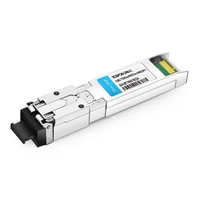 XGSPON-ONU-C XGSPON ONU SFP+ TX-9.95G/RX-9.95G TX-1270nm/RX-1577nm N1/N2 SC DDM 0°C~70°C Optical Transceivers
$75.00
XGSPON-ONU-C XGSPON ONU SFP+ TX-9.95G/RX-9.95G TX-1270nm/RX-1577nm N1/N2 SC DDM 0°C~70°C Optical Transceivers
$75.00
-
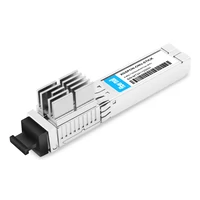 XGSPON ONU Stick Compatible WAS-110 SFP+ TX-9.95G/RX-9.95G TX-1270nm/RX-1577nm SC/APC DDM Optical Transceivers
$160.00
XGSPON ONU Stick Compatible WAS-110 SFP+ TX-9.95G/RX-9.95G TX-1270nm/RX-1577nm SC/APC DDM Optical Transceivers
$160.00
-
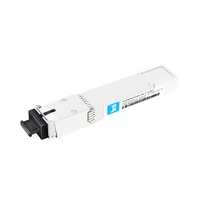 FiberMall XGS/GPON-OLT-CB+ XGSPON GPON Combo B+ OLT MPM SFP-DD TX-9.95G/RX 9.953G, 2.488 Gbps Tx-1577nm/Rx-1270nm SC UPC DDM Optical Transceivers
$300.00
FiberMall XGS/GPON-OLT-CB+ XGSPON GPON Combo B+ OLT MPM SFP-DD TX-9.95G/RX 9.953G, 2.488 Gbps Tx-1577nm/Rx-1270nm SC UPC DDM Optical Transceivers
$300.00
-
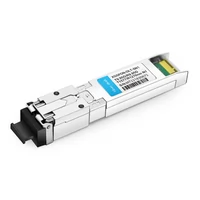 FiberMall XGSPON-OLT-SN1 XGSPON OLT SFP+ TX-9.95G/RX-9.95G, 2.488G Tx-1577nm/Rx-1270nm SN1 SC UPC DDM Optical Transceivers
$300.00
FiberMall XGSPON-OLT-SN1 XGSPON OLT SFP+ TX-9.95G/RX-9.95G, 2.488G Tx-1577nm/Rx-1270nm SN1 SC UPC DDM Optical Transceivers
$300.00
-
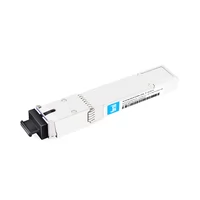 FiberMall XGS/GPON-OLT-CC+ XGSPON GPON Combo C+ OLT MPM SFP+ TX-9.95G/RX 9.953G, 2.488 Gbps Tx-1577nm/Rx-1270nm SC UPC DDM Optical Transceivers
$315.00
FiberMall XGS/GPON-OLT-CC+ XGSPON GPON Combo C+ OLT MPM SFP+ TX-9.95G/RX 9.953G, 2.488 Gbps Tx-1577nm/Rx-1270nm SC UPC DDM Optical Transceivers
$315.00
-
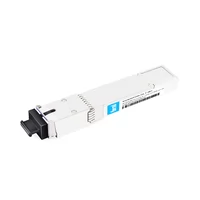 FiberMall XGS/GPON-OLT-IB+ XGSPON GPON Combo B+ I-temp OLT MPM SFP-DD TX-9.95G/RX-9.95G Tx-1577nm/Rx-1270nm SC DDM -40°C~85°C Optical Transceivers
$315.00
FiberMall XGS/GPON-OLT-IB+ XGSPON GPON Combo B+ I-temp OLT MPM SFP-DD TX-9.95G/RX-9.95G Tx-1577nm/Rx-1270nm SC DDM -40°C~85°C Optical Transceivers
$315.00
-
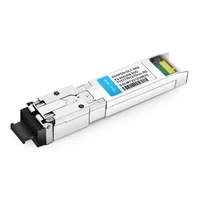 FiberMall XGSPON-OLT-SN2 XGSPON OLT SFP+ TX-9.95G/RX-9.95G, 2.488G Tx-1577nm/Rx-1270nm SN2 SC UPC DDM Optical Transceivers
$315.00
FiberMall XGSPON-OLT-SN2 XGSPON OLT SFP+ TX-9.95G/RX-9.95G, 2.488G Tx-1577nm/Rx-1270nm SN2 SC UPC DDM Optical Transceivers
$315.00
-
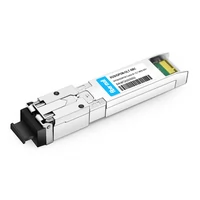 FiberMall XGS/GPON-OLT-SBC XGSPON GPON Combo B+ OLT MPM SFP+ TX-9.95G/RX 9.953G, 2.488 Gbps Tx-1577nm/Rx-1270nm SC UPC DDM Optical Transceivers
$325.00
FiberMall XGS/GPON-OLT-SBC XGSPON GPON Combo B+ OLT MPM SFP+ TX-9.95G/RX 9.953G, 2.488 Gbps Tx-1577nm/Rx-1270nm SC UPC DDM Optical Transceivers
$325.00
-
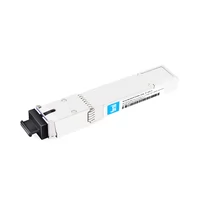 FiberMall XGS/GPON-OLT-IC+ XGSPON GPON Combo C+ I-temp OLT MPM SFP-DD TX-9.95G/RX-9.95G Tx-1577nm/Rx-1270nm SC DDM Optical Transceivers
$330.00
FiberMall XGS/GPON-OLT-IC+ XGSPON GPON Combo C+ I-temp OLT MPM SFP-DD TX-9.95G/RX-9.95G Tx-1577nm/Rx-1270nm SC DDM Optical Transceivers
$330.00
-
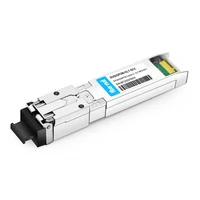 FiberMall XGS/GPON-OLT-SCC XGSPON GPON Combo C+ OLT MPM SFP+ TX-9.95G/RX 9.953G, 2.488 Gbps Tx-1577nm/Rx-1270nm SC UPC DDM Optical Transceivers
$345.00
FiberMall XGS/GPON-OLT-SCC XGSPON GPON Combo C+ OLT MPM SFP+ TX-9.95G/RX 9.953G, 2.488 Gbps Tx-1577nm/Rx-1270nm SC UPC DDM Optical Transceivers
$345.00
